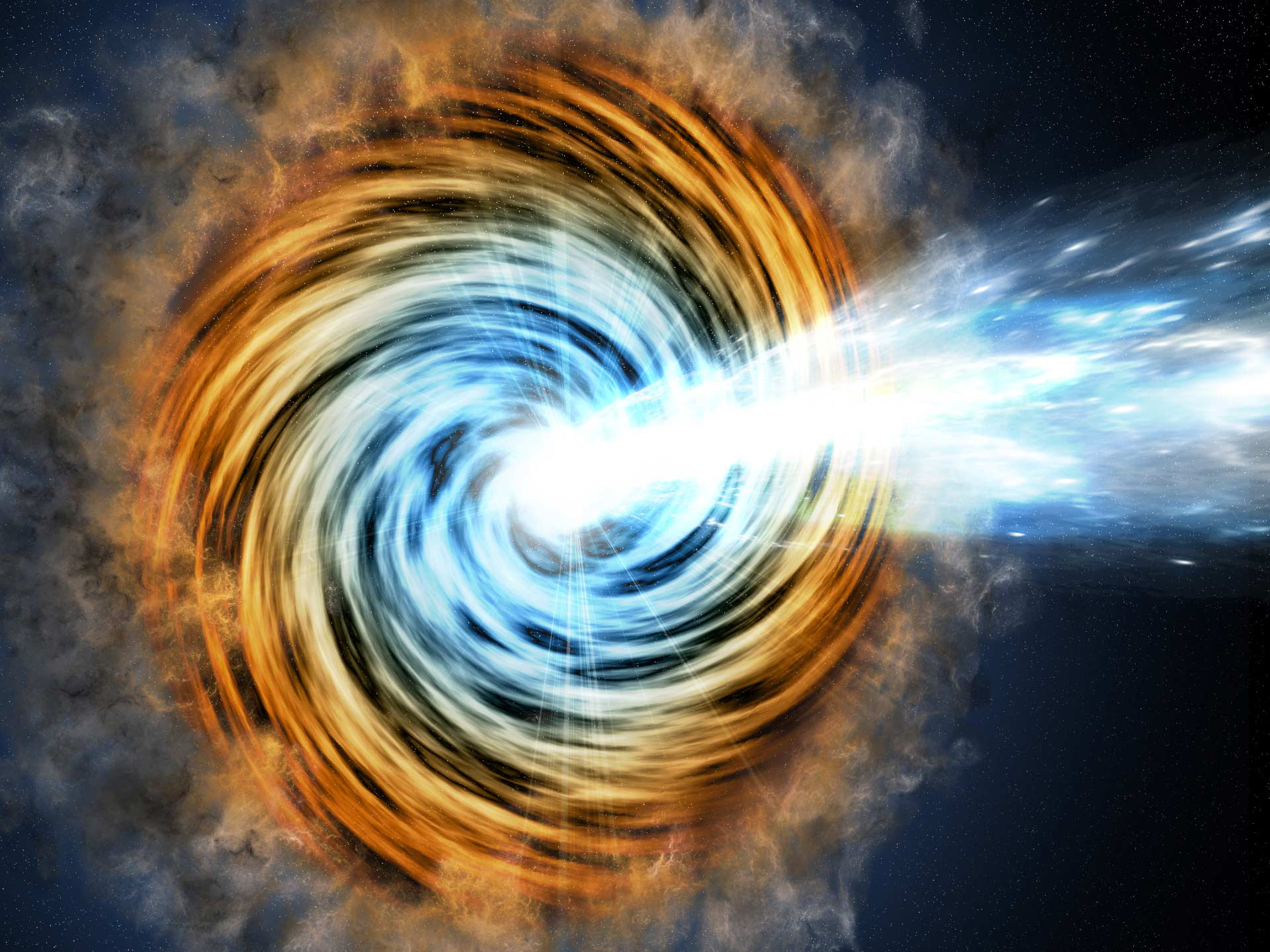They detected some high-energy gamma rays..
These particular rays were detected from 7.6 billion light years away. And the detection is significant in that it will help astronomers better understand these unique types of galaxies and the black holes at the centers of them. They actually combined more than one telescope in this particular study:
Using NASA’s Fermi Space Telescope, the Very Energetic Radiation Imaging Telescope Array System (VERITAS) in Arizona, and other telescopes, astronomers have detected high-energy gamma-ray emission from an extremely distant galaxy.
The gamma rays came from PKS 1441+25, a type of galaxy called a blazar, according to two studies published in the Astrophysical Journal Letters.
The cool thing about the classification of “blazar” is that matter is known to accelerate out of a black hole at close to the speed of light, and when it points towards us it becomes super bright.
Here is a quick definition of gamma rays from wikipedia:
Gamma radiation, also known as gamma rays, and denoted by the Greek letter γ, refers to electromagnetic radiation of an extremely high frequency and therefore consists of high-energy photons. Gamma rays are ionizing radiation, and are thus biologically hazardous. They are classically produced by the decay of atomic nuclei as they transition from a high energy state to a lower state known as gamma decay, but may also be produced by other processes.
This galaxy lies in the constellation Boötes, approximately 7.6 billion light-years away, and has a black hole of about 70 million solar masses at its center.
If placed at the center of our own Solar System, the black hole’s event horizon would extend almost to the orbit of Mars.
NASA’s Fermi telescope detected gamma rays up to 33 billion electron volts (GeV). For comparison, visible light has energies between about 2 and 3 eV.
We’re looking forward to hearing more from the teams and new pics from the Fermi telescope.
thanks to sci-news.com for the great info
thanks to NASA for the pic

I’m a blazer galaxy. Lol pot head humor.
Sweet image tho.
Yes….yes I have!